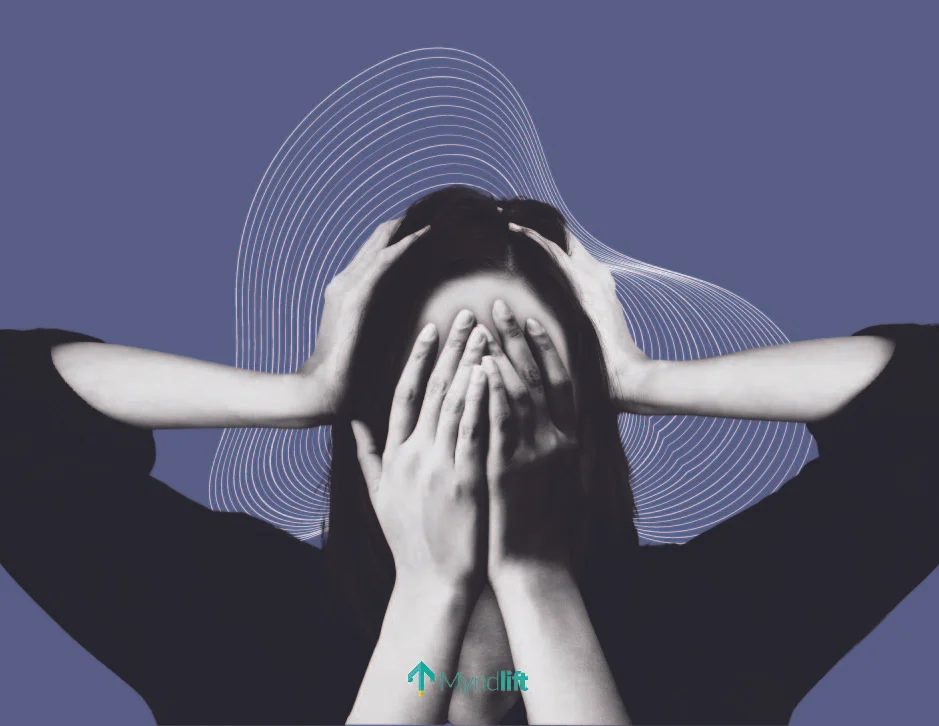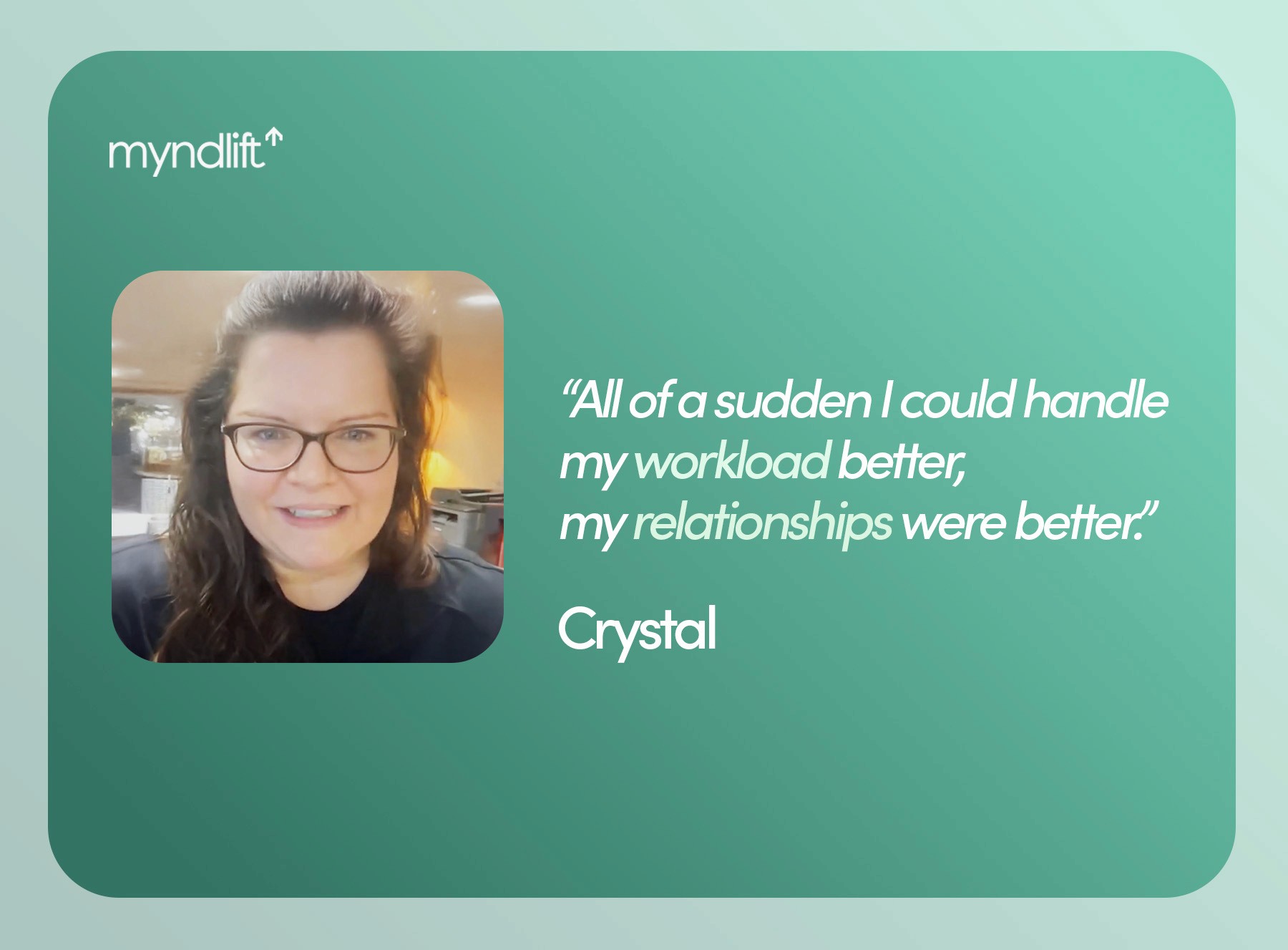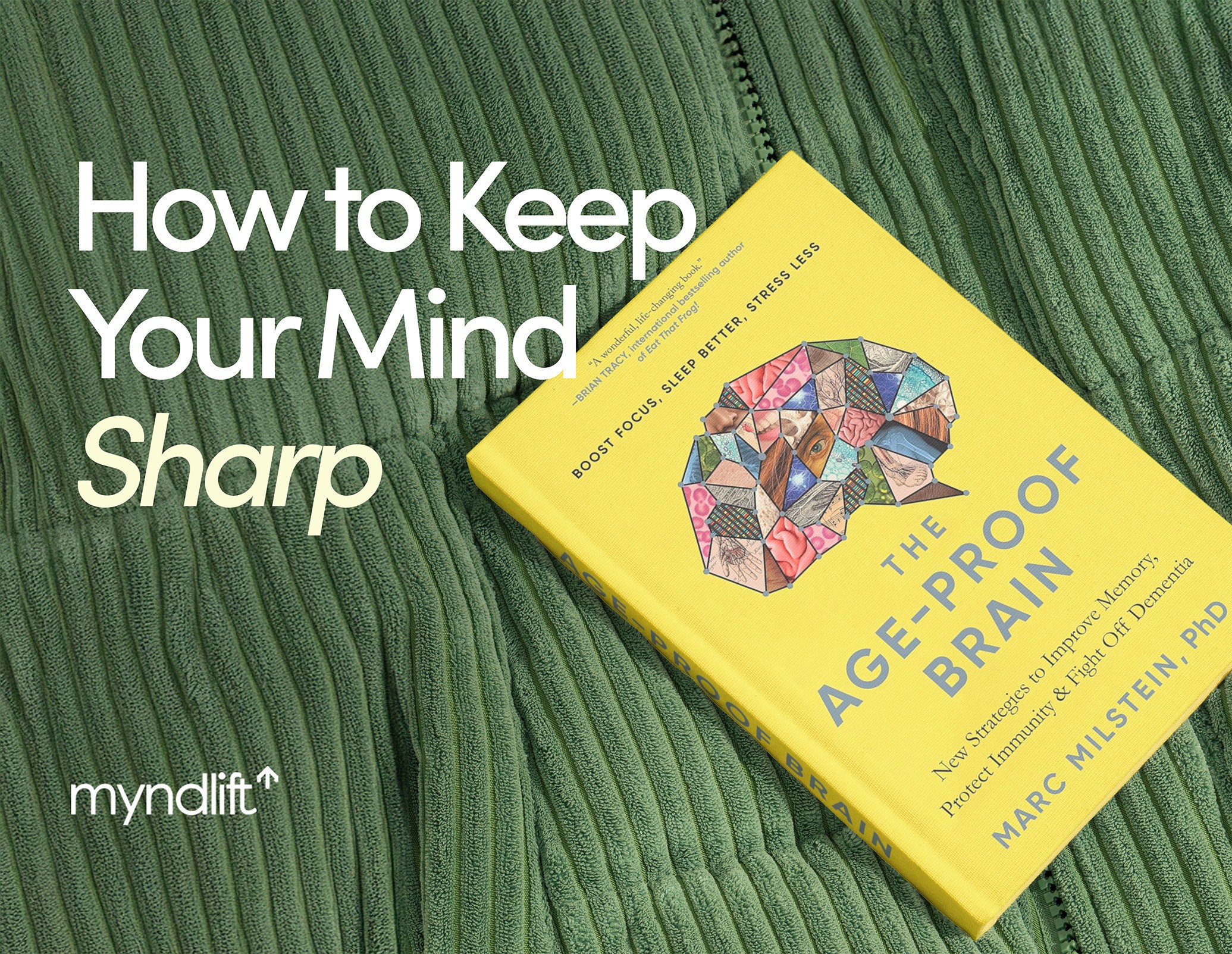Imagine a stealthy intruder who undermines your health and subtly wreaks havoc in the background. This unruly saboteur – known as cortisol, or, the “stress hormone” – can throw your energy levels, mood, and overall health into disarray. So, if you’ve ever found yourself feeling tired but wired, or struggling with chronic stress, anxiety, or poor sleep, chances are, your cortisol levels might be playing a pivotal role.
But here's the good news! It's not a lost cause, and you can regain control. In this article we’ll unpack six science-backed strategies to dial down your cortisol levels and reduce stress:
The Impact of Stress on the Body and Mind
When you experience stress, your body releases cortisol, a hormone that activates the "fight-or-flight" response. This response occurs when your body perceives a stressful, frightening, or dangerous situation. You might have experienced it: your pulse races, your breathing speeds up, your pupils dilate – all in response to perceived danger.
While these symptoms serve an important purpose in some situations, they can be disruptive and uncomfortable in others. For example, if you suffer from chronic stress, you may have an overactive fight-or-flight response that can be triggered frequently, even when you're not in danger.
As a result, this overexposure to cortisol might change the way your body functions and cause a variety of issues and concerns such as muscle tension, fatigue, cardiovascular disease, migraine headaches, fibromyalgia (widespread musculoskeletal pain), and other forms of chronic pain.
Furthermore, symptoms of chronic stress can take a toll on your mental and emotional health, increasing anxiety, irritability, depression, and difficulty focusing.
Luckily, learning ways to lower your cortisol levels and reduce your stress can help you improve these negative effects.
6 Science-Backed Ways to Reduce Stress
You may not be able to control your circumstances, but you can usually control how you respond. With that in mind, here are some science-backed techniques you can use to provide momentary relief and help you feel more empowered when faced with a stressful situation:
1. Exercise
Exercise has been pretty consistently recommended for decreasing stress levels. Studies have shown that the recommended amount of exercise to reduce stress is 30-40 minutes of moderate aerobic exercise 3-5 days per week (or 150 minutes per week).
When we exercise, our brains release endorphins – the feel good hormone – which help to relieve pain, reduce stress, and improve mood.
Some exercises you can do to get those endorphins flowing include:
Brisk walking
Jogging
Bicycling
Some less intense exercises, like Tai Chi or yoga, have also been shown to reduce stress when engaging in those activities between 60-90 minutes for 2-3 days a week.
2. Mindfulness meditation
Mindfulness meditation is a practice that involves focusing your attention on the present moment, without judgment. It's about being fully aware of your thoughts, sensations, and surroundings, accepting them as they are without getting caught up in them. This practice helps cultivate a sense of calm, clarity, and non-reactivity, promoting overall well-being.
In order to get the most out of mindfulness meditation and lower those cortisol levels, practicing daily would be ideal. The amount of time can vary depending on your needs and the severity of your stress.
Ten minutes a day might be all that is needed with possible noticeable results within 8 weeks. But, 10 minutes can be a long time for those just starting out. So, for beginners looking to reduce stress, practicing the two-minute rule can help you get to that 10 minutes. Start with just 2 minutes, then after a few days, add on 1 minute. Continue adding 1 minute every few days.
It's important to note that the research on the timeframe required to experience the long-term effects of meditation is still evolving.
Unsure where to start? Learn some mindfulness meditation techniques here.
3. Deep breathing
Deep breathing is another great, science-backed, and often overlooked method that helps with reducing stress and anxiety. Deep breathing is a technique that involves breathing slowly in through the nose and out through the mouth. This method can increase the flow of oxygen to the brain, thereby slowing the heart rate and stimulating the parasympathetic nervous system (the network of nerves that is responsible for relaxing your body after periods of stress or high alertness).
A popular deep breathing method that’s easy to remember is the box breathing technique. For box breathing:
Inhale for 4 seconds in through your nose
Holding for 4 seconds
Exhale for 4 seconds
Hold again for 4 seconds
Continue to repeat the breathing cycle until you feel relaxed
4. Progressive muscle relaxation
Progressive muscle relaxation isn’t just great for releasing some stress, it can also help you pinpoint which areas of the body that stress is coming from! The way it works is by alternating tensing and relaxing various major muscle groups. If you’re unfamiliar with progressive muscle relaxation, it works like this:
Find a quiet, comfortable space where you won't be interrupted.
Sit or lie down in a comfortable position. If you choose to sit, ensure your back is supported.
Start by taking a few slow, deep breaths using the box breathing technique mentioned above.
Next, focus on your feet. Curl your toes tightly as if you are trying to pick up a pencil with your toes. Hold for 5 seconds.
Slowly relax your feet and allow the tension to flow away. Notice the difference between tension and relaxation. Rest for 15 seconds.
Move up your legs. Tense the muscles in your calves by pushing your heels down and curling your toes upwards. Hold for 5 seconds.
Release the tension slowly and let your muscles relax completely. Notice the sensation of relief that comes with releasing the tension. Rest for 15 seconds.
Continue up your legs. Tense the muscles in your thighs by pressing your knees together as tightly as you can. Hold for 5 seconds.
Slowly let the tension go and let your muscles relax. Feel the tension draining out of your muscles. Rest for 15 seconds.
Continue this pattern (tense, hold, relax, rest) with the following muscle groups:
Buttocks: Clench them together.
Stomach: Suck it into a tight knot.
Back: Arch your back up and away from the floor or chair.
Hands and arms: Clench your hands into fists and pull your arms in front of your chest as if you were making a muscle.
Shoulders and neck: Shrug your shoulders up to your ears.
Face: Scrunch your facial muscles together.
After you've completed all the muscle groups lie still for a minute or so. Notice the feeling of relaxation and continue to breathe slowly and evenly. When you’re finished, move slowly and stand up gradually to avoid dizziness.
5. Laughter
Great news – now you have an excuse to binge an entire season of The Office in one sitting! But in all seriousness, research suggests that having a good laugh may indeed help with reducing your cortisol levels.
There seems to be no recommended amount of time you need to spend laughing, so feel free to get in as many laughs as you need, because, according to science, a good laugh every day is the best medicine.
6. Get enough sleep
Stress and sleep seem to go hand in hand; too much stress may result in poor sleep quality, while not enough sleep can increase stress. Experts recommend that adults need between 7-9 hours of sleep per night, so make sure you’re doing what you need to do so you can feel rested and relaxed.
You can let your body know it’s time for bed by:
Taking a warm bath one to two hours before bed. Getting yourself into a warm bath or shower, ideally at 104 to 109 ℉ (40 to 43℃), has been shown to help with being able to drift off faster.
Lowering the thermostat in your bedroom. In order to prepare you for sleep, your body lowers your core temperature. By lowering the temperature in your room to the recommended 65°F (18°C), you are signaling to your body that it’s time for bed.
Check With Your Doctor or Mental Health Professional
If you’re struggling with chronic stress, it’s important to talk to your doctor or mental health professional. They may recommend a combination of lifestyle changes, therapy, and/or medication. Research has found that a popular form of neurotherapy called neurofeedback has also proven to be effective in reducing stress.
Sometimes your brain can get a little bit out of balance. Maybe you’re feeling anxious or having trouble focusing. That's where neurofeedback comes in! Neurofeedback is like a training program for your brain. It's a way to teach your brain how to be more balanced and work at its best. But how does it do that?
Your brain is like a supercomputer that controls everything you do and feel. It's constantly sending electrical signals (known as brainwaves) to different parts of your body, making sure everything works smoothly. These brainwaves have different frequencies that are linked to different mental states. (i.e. alpha waves for being alert but calm or delta waves for sleep).
During a neurofeedback session, you'll wear a headband that monitors your brain activity. A system will analyze the activity and give you feedback in real-time. What does that mean?
It means that the feedback corresponds to what your brain is doing at that moment! So if your brain is in a balanced and focused state, you might hear a pleasant sound or earn more points.
But if your brain starts to wander off or you get too anxious, the feedback will let you know.
When you receive this feedback, you start to learn how to control your brain activity. It's your brain telling you what the problem is and how to fix it.
With time and practice, your brain gets better and better at staying in that optimal state of control. It starts to remember what it feels like to be balanced and focused, and it becomes easier to achieve that state in your everyday life.
So for stress and anxiety, with neurofeedback you can train your brain to reduce arousal and create a more relaxed state of well-being.
Conclusion
While stress is a natural part of life, you don’t have to let that over-abundant cortisol control your physical and mental health. You can learn to regain control by engaging in stress reducing techniques that can significantly contribute to a healthier response to stress. By seeking professional help, and armed with support, knowledge, and the right tools, you can navigate the challenges life throws at you with resilience and a sense of control.
About the author:
Veronica Silver
Veronica Silver is a former therapist turned mental health/substance abuse writer. Her education and experience helps her write from a place of knowledge and compassion. Her goal is to not only to inform, but to get individuals to connect with the information and resources.
About the checker:
Kaija Sander, Ph.D.
Kaija Sander is a cognitive neuroscientist and scientific consultant for Myndlift. She holds a BSc in Biomedical Science with a specialization in Neuroscience and Mental Health from Imperial College London and a PhD in Neuroscience from McGill University. Her doctoral research focused on brain connectivity relating to second language learning success. She is passionate about the broader applications of science to have a positive impact on people’s lives.
References
Akimbekov, N. S., & Razzaque, M. S. (2021). Laughter therapy: A humor-induced hormonal intervention to reduce stress and anxiety. Current Research in Physiology, 4, 135–138. https://doi.org/10.1016/j.crphys.2021.04.002
American Psychological Association. (n.d.). Stress. American Psychological Association. https://www.apa.org/topics/stress
Basso, J. C., McHale, A., Ende, V., Oberlin, D. J., & Suzuki, W. A. (2019). Brief, daily meditation enhances attention, memory, mood, and emotional regulation in non-experienced meditators. Behavioural Brain Research, 356, 208–220. https://doi.org/10.1016/j.bbr.2018.08.023
Centers for Disease Control and Prevention. (2021, July 29). Physical activity recommendations for different age groups. Centers for Disease Control and Prevention. https://www.cdc.gov/physicalactivity/basics/age-chart.html
Childs, E., & de Wit, H. (2014). Regular exercise is associated with emotional resilience to acute stress in healthy adults. Frontiers in Physiology, 5. https://doi.org/10.3389/fphys.2014.00161
Gallo, L. C., Roesch, S. C., Fortmann, A. L., Carnethon, M. R., Penedo, F. J., Perreira, K., Birnbaum-Weitzman, O., Wassertheil-Smoller, S., Castañeda, S. F., Talavera, G. A., Sotres-Alvarez, D., Daviglus, M. L., Schneiderman, N., & Isasi, C. R. (2014). Associations of chronic stress burden, perceived stress, and traumatic stress with cardiovascular disease prevalence and risk factors in the Hispanic Community Health Study/study of Latinos sociocultural ancillary study.
Psychosomatic Medicine, 76(6), 468–475. https://doi.org/10.1097/psy.0000000000000069
Haghayegh, S., Khoshnevis, S., Smolensky, M. H., Diller, K. R., & Castriotta, R. J. (2019). Before-bedtime passive body heating by warm shower or bath to improve sleep: A systematic review and meta-analysis. Sleep Medicine Reviews, 46, 124–135. https://doi.org/10.1016/j.smrv.2019.04.008
Jackson, E. M. (2013). Stress relief. ACSM’S Health & Fitness Journal, 17(3), 14–19. https://doi.org/10.1249/fit.0b013e31828cb1c9
Khoury, B., Lecomte, T., Fortin, G., Masse, M., Therien, P., Bouchard, V., Chapleau, M.-A., Paquin, K., & Hofmann, S. G. (2013). Mindfulness-based therapy: A comprehensive meta-analysis. Clinical Psychology Review, 33(6), 763–771. https://doi.org/10.1016/j.cpr.2013.05.005
Li, A. W., & Goldsmith, C.-A. W. (2012, March 17). The effects of yoga on anxiety and stress. Alternative medicine review : a journal of clinical therapeutic. https://pubmed.ncbi.nlm.nih.gov/22502620/
Lok, R., Koningsveld, M. J., Gordijn, M. C., Beersma, D. G., & Hut, R. A. (2019). Daytime melatonin and light independently affect human alertness and body temperature. Journal of Pineal Research, 67(1). https://doi.org/10.1111/jpi.12583
Ma, X., Yue, Z.-Q., Gong, Z.-Q., Zhang, H., Duan, N.-Y., Shi, Y.-T., Wei, G.-X., & Li, Y.-F. (2017). The effect of diaphragmatic breathing on attention, negative affect and stress in healthy adults. Frontiers in Psychology, 8. https://doi.org/10.3389/fpsyg.2017.00874
McEwen, B. S. (2017). Neurobiological and systemic effects of chronic stress. Chronic Stress, 1, 247054701769232. https://doi.org/10.1177/2470547017692328
Physical activity guidelines resources. ACSM_CMS. (n.d.). https://www.acsm.org/education-resources/trending-topics-resources/physical-activity-guidelines
Rokade, P. (2011). [PDF] release of endomorphin hormone and its effects on our body and moods: A review: Semantic scholar. [PDF] Release of Endomorphin Hormone and Its Effects on Our Body and Moods: A Review | Semantic Scholar. https://www.semanticscholar.org/paper/Release-of-Endomorphin-Hormone-and-Its-Effects-on-A-
Rokade/d9d6a77f113bb866ea1588edf646a60e25ca1755?p2df
Saanijoki, T., Tuominen, L., Tuulari, J. J., Nummenmaa, L., Arponen, E., Kalliokoski, K., & Hirvonen, J. (2017). Opioid release after high-intensity interval training in healthy human subjects. Neuropsychopharmacology, 43(2), 246–254. https://doi.org/10.1038/npp.2017.148
Shaw, W., Labott-Smith, S., Burg, M. M., Hostinar, C., Alen, N., van Tilburg, M. A. L., Berntson, G. G., Tovian, S. M., & Spirito, M. (2018, November 1). Stress effects on the body. American Psychological Association. https://www.apa.org/topics/stress/body
Thau, L., Gandhi, J., & Sharma, S. (2022, August 29). Physiology, stress reaction - statpearls - NCBI bookshelf. National Library of Medicine. https://www.ncbi.nlm.nih.gov/books/NBK541120/
Tindle, J., & Tadi, P. (2022, October 31). Neuroanatomy, parasympathetic nervous system - statpearls - NCBI bookshelf. National Library of Medicine. https://www.ncbi.nlm.nih.gov/books/NBK553141/
Toussaint, L., Nguyen, Q. A., Roettger, C., Dixon, K., Offenbächer, M., Kohls, N., Hirsch, J., & Sirois, F. (2021). Effectiveness of progressive muscle relaxation, deep breathing, and guided imagery in promoting psychological and physiological states of relaxation. Evidence-Based Complementary and Alternative Medicine, 2021, 1–8. https://doi.org/10.1155/2021/5924040
U.S. Department of Health and Human Services. (2022, March 24). Why is sleep important?. National Heart Lung and Blood Institute. https://www.nhlbi.nih.gov/health/sleep/why-sleep-important
Worley, S. L. (2018, December). The extraordinary importance of sleep: The detrimental effects of inadequate sleep on health and public safety drive an explosion of sleep research. P & T : a peer-reviewed journal for formulary management. https://www.ncbi.nlm.nih.gov/pmc/articles/PMC6281147/
Yim, J. (2016). Therapeutic benefits of laughter in mental health: A theoretical review. The Tohoku Journal of Experimental Medicine, 239(3), 243–249. https://doi.org/10.1620/tjem.239.243





